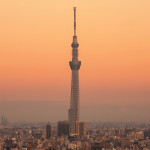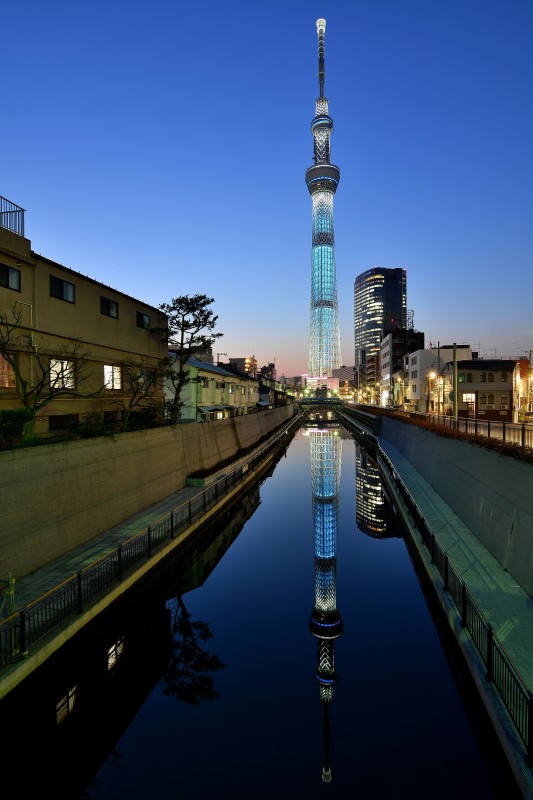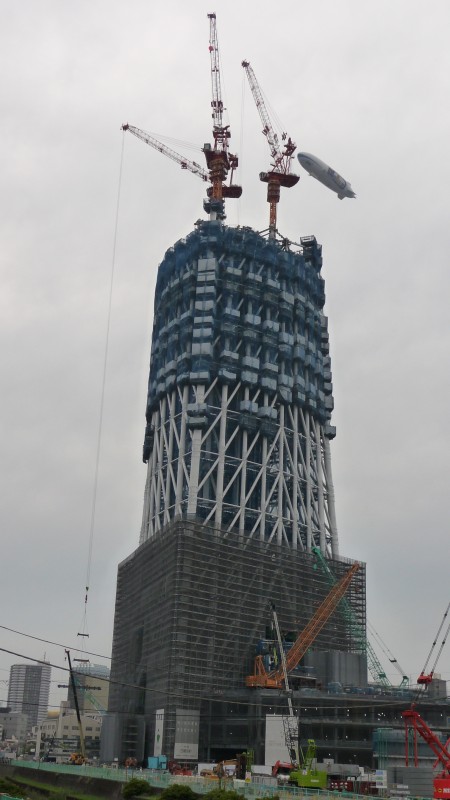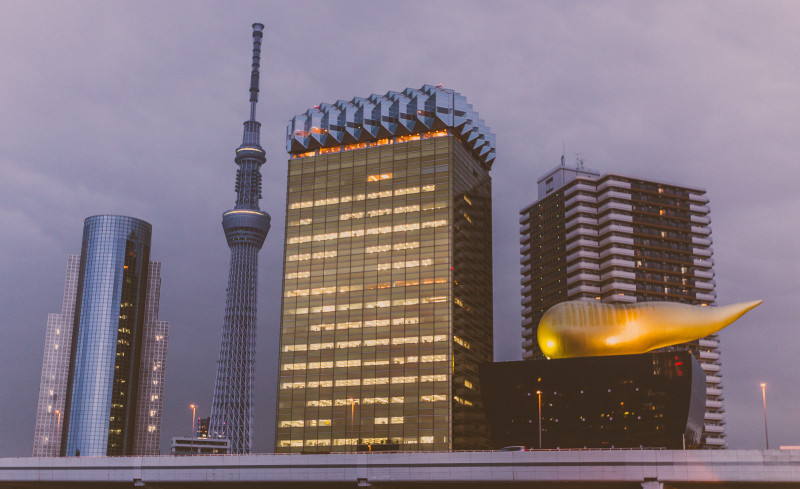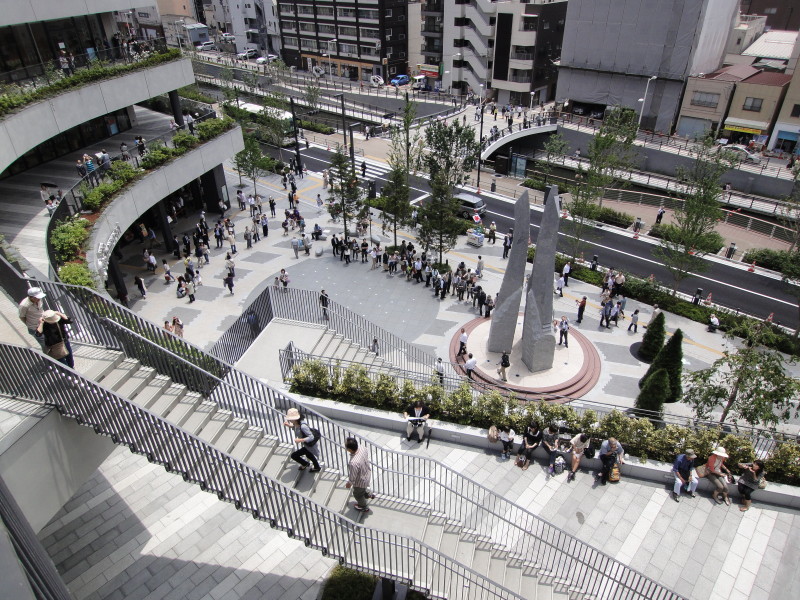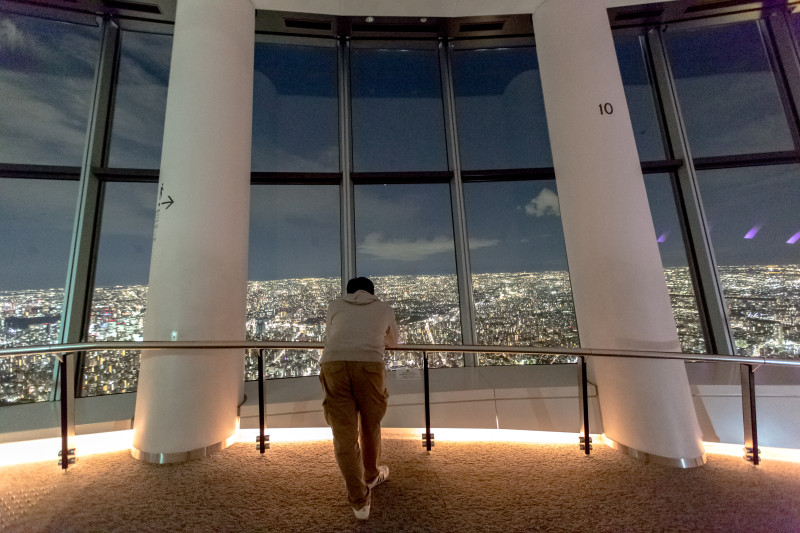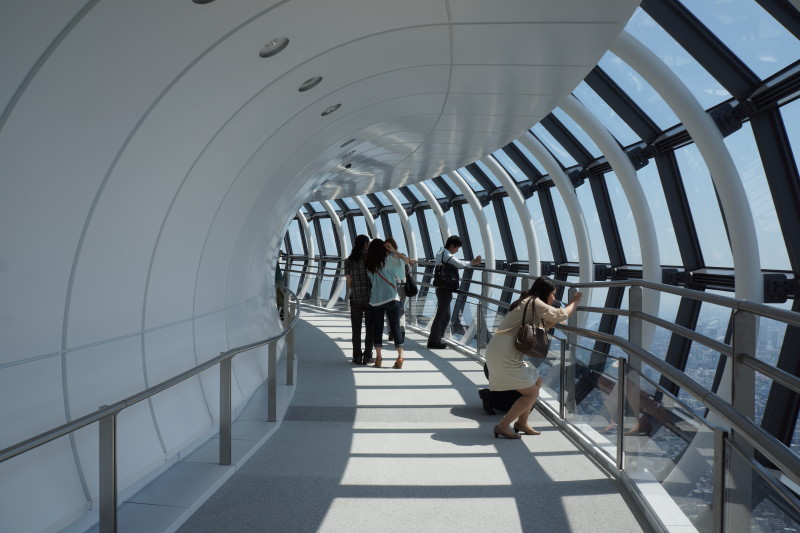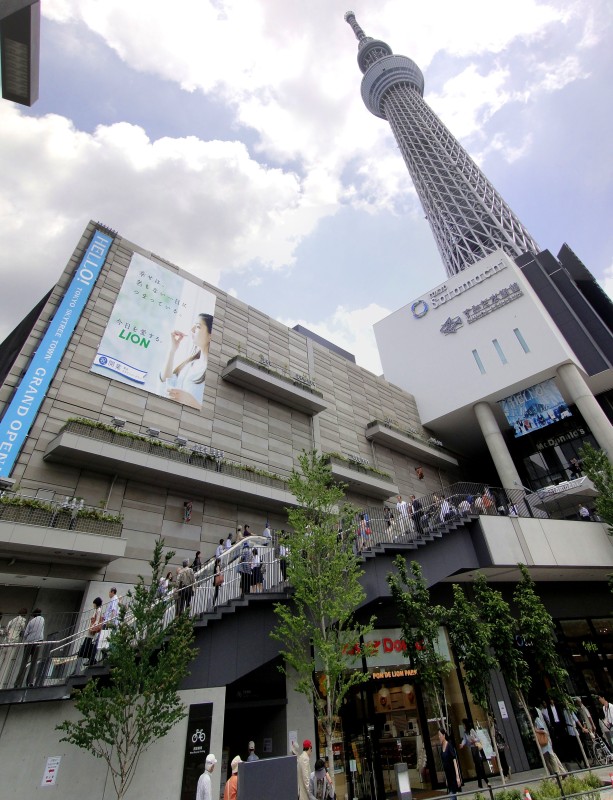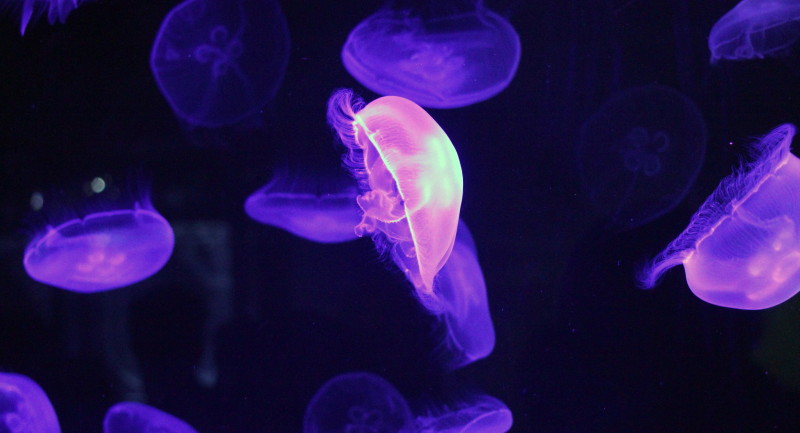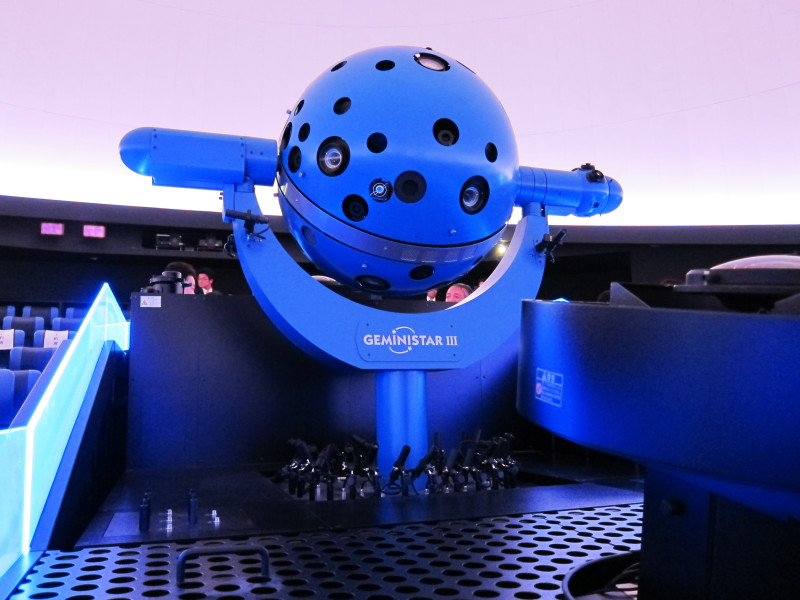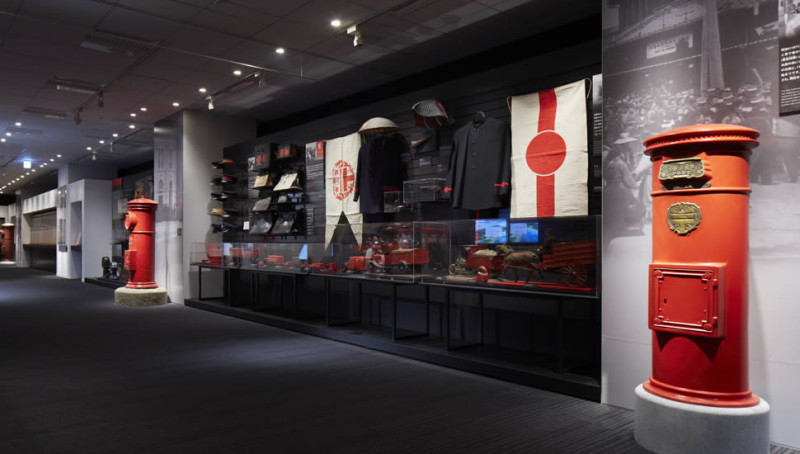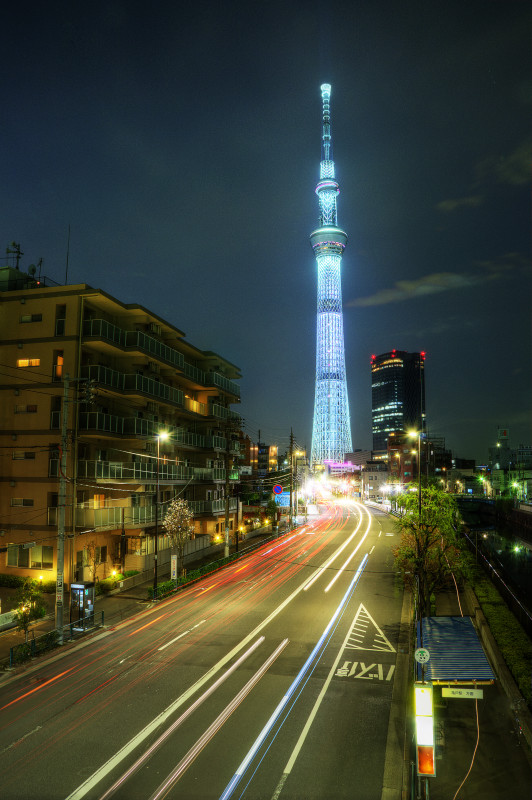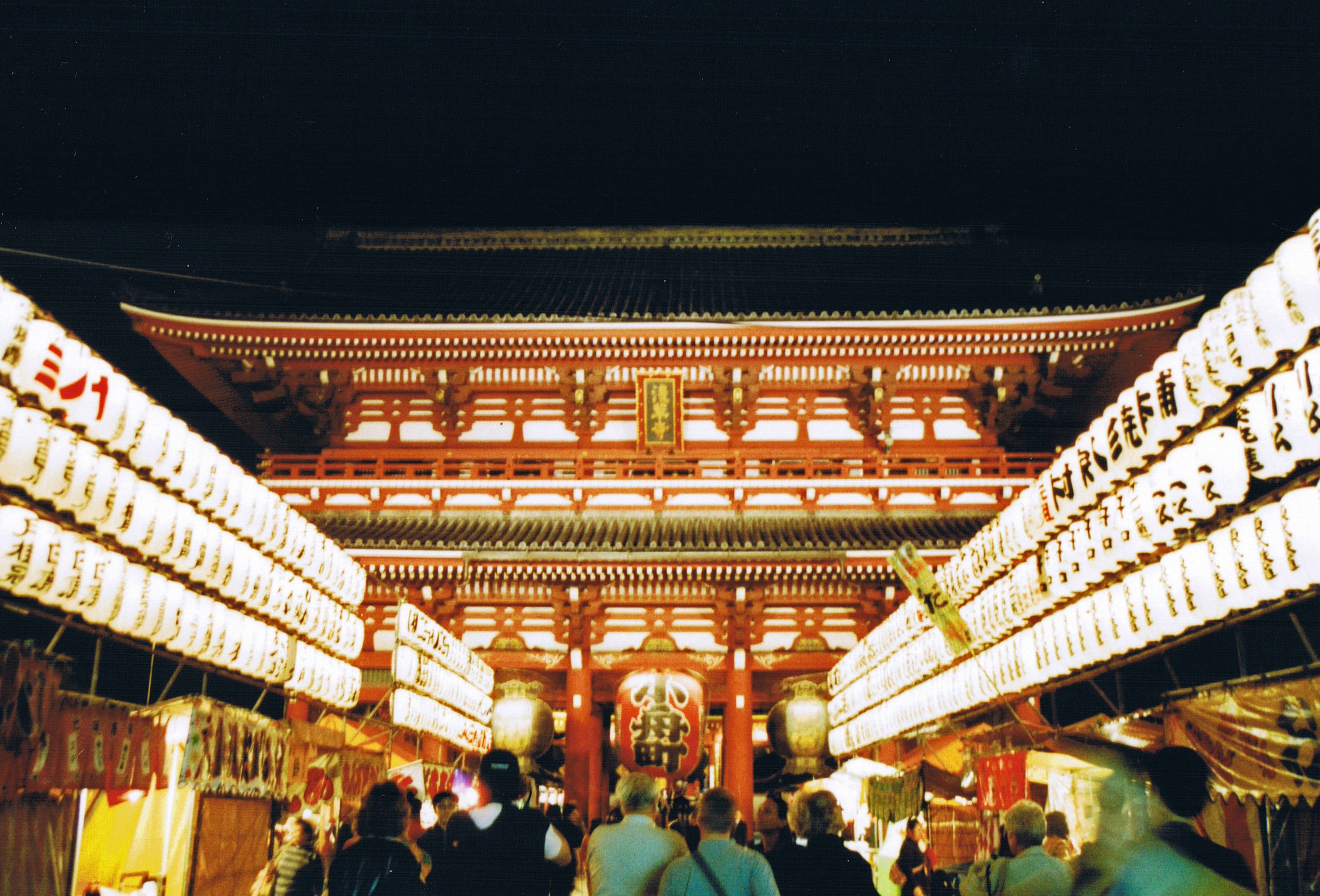If you live in Japan, or interested in Japan but living abroad, it is easy to get used to all sort news about the latest technological wonder been adopted and used here, and it is true, we are in an age that technology is been implemented in ways we have never imagined are possible before. Yet, once in a while, there is a breakthrough and something that we never thought is even possible is been added to our lifestyle and become a pinnacle of human achievement. 2006 was the first time Tokyo residents heard about the new idea to build the tallest tower in the world right in the center of the city. The idea was to replace the old broadcasting towers around the whole Kanto region with one tall tower that will rise over all the skyscrapers around it and provide digital terrestrial television broadcasting transmission services to all TV stations and telecommunication companies. The idea was accepted by the Tokyo government and 6 years later the tower was officially completed.
Reaching the height of 634 meters (2,080 ft) the Tokyo Skytree has become the tallest tower in the world and Tokyo residents start getting used to seeing this magnificent structure from anywhere around the city. Tokyo Skytree was erected directly from within a massive complex which includes 31 floors high-rise office tower, multilevel shopping center, Japan largest aquarium, dome planetarium theater, academic institutes, and large exhibition halls. Very quickly Tokyo Skytree become the city main tourist attractions and millions of people have visited this architectural wonder. The tower with its elegant contemporary design become the most iconic image of Tokyo and it is hard to find anyone who did not had a chance to get up to the tower top observatory and enjoy the breathtaking sight from up top.
If you are planning to get to visit Tokyo, be sure to not miss the opportunity to visit Tokyo Skytree. Allow yourself a full day of explorations and enjoyment within the tower complex and you will be guaranteed a once in a lifetime experience!
1. Tower History – How did they built it and why was it named “Skytree”?
The suggestion design for Tokyo Skytree was heavily influenced from the Neo-futurism movement of the early 21st century in the arts, design, and architecture around Tokyo while at the same time, the design was meant to preserve classic Japanese traditional design concepts. The result was a perfect fusion between those two architectural styles allowing both aesthetic and functionality to be combined into the iconic image of the tower. The base of the tower was designed to look like a massive tripod which holds the observation decks and the broadcasting equipment within its complex structure while at the same time, the tripod design was allowing the whole structure to be fully Earthquake resistance. The tripod exterior is concealing the main 125 meters (410 ft) internal pillar and support the structure to withstand both powerful Earthquake and very strong winds by absorbing most of the energy in case of a very strong Earthquake or powerful Typhoons.
Once the design was suggested and agreed upon, it was time to give the tower a name. The process of choosing a name for the tower was allowing the general public to suggest names for it and a special committee had vetted 6 final candidate names for the tower in 2008.
- Tokyo Sky Tree
- Tokyo Edo Tower
- Rising Tower
- Mirai Tower (Future Tower in Japanese)
- Yumemi Yagura (Dream lookout in Japanese)
- Rising East Tower
In 2008, there was a national general vote and 30% of the voters decided to call it “Tokyo SkyTree”.
2. How to get to Tokyo Skytree?
Tokyo SkyTree complex was built with special train station right next to it, The Tokyo Skytree Station, but the tower is reachable by many other lines and is easily accessed by foot from Asakusa area. Lets go over the option you have to find your way to the tower.
Tokyo Skytree Station
This station is used by the new TOBU SKYTREE Line which connects Asakusa and Nikko areas. Take the Tobu Line from Asakusa on one end or on any of the other stations all the way to Nikko area and get off at the Tokyo Sky Tree Station. From the station it is a 2 minutes walk to reach the tower complex. If you are coming from Ueno area, take the Tokyo Metro Ginza Line and transfer to the TOBU SKYTREE Line at Asakusa Station.
Oshiage Station (SKYTREE)
The Oshiage Station which is located on the other side of the SkyTree complex is serviced by 4 different subway and train systems. TOBU SKYTREE Line, Tokyo Metro Hanzomon Line, Narita SKY ACCESS Keisei Line, and oei Asakusa Line. If you are coming from Tokyo Station, take the JR Sobu Rapid Line and transfer at Kinshicho for the Tokyo Metro Hanzomon Line. If you are coming from Shinagawa Station or directly from Haneda Airport, take the Toei Asakusa Line, and if you are coming from Narita Airport, take the Narita SKY ACCESS Keisei Line.
Asakusa Station
If you feel like walking a bit and enjoy the view of the tower as you get close to it, use the Tokyo Metro Ginza Line and get off at Asakusa Station. From there it is about 15 minutes walk toward the tower.
Kinshicho Station
This station is much closer the Asakusa to the tower complex and only take about 9 minutes walk. You can take take JR Sobu Line or Tokyo Metro Hanzomon Line and get off at Kinshicho Station.
3. What is Tokyo Skytree Town?
Tokyo SkyTree was built in the center of complex of buildings and attraction zones to allow visitors to enjoy shopping and family oriented attractions. The entrance to the SkyTree Town is right under the tower and it includes the Tokyo Solamachi Shopping Center, the 31 story high office building, the Sumida Aquarium building, The Konica Minolta Planetarium Dome, The Postal Museum, and the park area surrounding the tower. SkyTree Town was constructed to allow visitors a full day attractions from morning to night time, including restaurants for morning, lunch and dinner, easy access for wheelchairs, and lots of playground attractions for kids. If you need assistance and guidance in regards to any of the town attractions, there is a visitors information center which its staff speaks English, Chinese, Korean, and Thai. The information center also offers map and floor guide free of charge.
Free Internet Access Information
Tokyo SkyTree Tow is also offering free broadband high speed wireless Internet connection to all its visitors with TOBU FREE Wi-Fi system. In addition to this service, Tokyo SkyTree Town part of the “Japan Connected-free Wi-Fi” system, which is a free local-area Wi-Fi hotspot search app project for tourists from abroad. This system is operated by NTT Broadband Platform. Customers who create an account through a free app can easily make use of Internet access available in TOBU FREE Wi-Fi areas as well as other free Wi-Fi hotspots offered by NTT Broadband Platform.
To get the free app – Please use this links:
For iOS Devices: iTunes Store Link
For Android Devices: Google Play Store Link
4. Tokyo Skytree Observation Decks
Tokyo Skytree offers 2 observations decks for visitors. The Tembo Deck is the first observation deck is is built in the 350 meters level of the tower. The deck is covered in massive 5 meter-high glass windows for a 360-degree all-round view, allowing visitors to see from the base of the Skytree and 70 kilometers away into the horizon. The Tembo Deck is also where the Musashi Sky Restaurant is located, where visitors can enjoy relaxing time while enjoying the magnificent view. The Tembo Deck is connected by staircase and elevator to floors right above and under it. The bottom floor offers a relaxing environment at the Skytree Cafe area and glass floors for visitors who do not suffer from fear of heights! The top floor has another lounge area at the Skytree Cafe East and a special counter to buy tickets to the next observation deck at the top of the tower, The Tembo Galleria!
The Tembo Galleria is built at the highest point visitors can reach, in the 450 meters level of the tower. This observation deck is designed as one long glass tube spiraling all around the tower all the way up to the highest point reachable by visitors called Sorakara Point. The Tembo galleria is extremely beautiful at night when the tube is lit up with bright colorful neon lights and it is truly a feeling of walk in the sky.
5. Tokyo Solamachi Shopping Center
Tokyo Solomachi Shopping Center is located at the base of the Skytree tower and is connected to the 31 floors office building. The shopping center is using 10 floors of the building and the 30th and 31st top roof floors. All floors are connected with one long spiraling walking pathway and my best advice is to take the elevator up to the 10th floor and then start walking down the complex instead of climbing the long path.
The complex is divided to different areas on different levels. The 1st floor offers the Solamachi Shotengai Shopping area where visitors can find 35 food shops, sundries stores, and cafes. The Station Street area is a shopping street that faces the alley connected to the Tokyo Skytree Station. This street features stores that convey the “monozukuri” – the Japanese spirit of manufacturing and is full of hand crafted stores which the actual artist who create those items are the sellers and visitors can meet with those artists. The Fashion Zone area on the 2nd floor offers mainly women cloths and divided to themes shops of “beautiful,” “cute,” and “delicious,” this floor houses many fashion stores as well as sweets shops.
The Food Marche area is where visitors can find “local Japanese kitchen” stores and the area offers stores that sell fresh produce and Japanese and western deli dishes. The Solamachi Tabe-Terrace area on the 3rd floor features the Food Court which is made up of an open “Food Marche” area with hundreds of seating for customers. Visitors can enjoy a variety of food, from Japanese, western and Chinese, and desserts. The Japanese Souvenirs area in located on the 4th
floor with the large selection of souvenirs and specialty stores that focus on modern Japan style yet the floor is designed based on the theme of “oodana” merchant stores that were common in Edo towns hundred of years ago. The traditional Japanese structural aesthetics of columns, beams, and crossbeams remind old Japan while offering contemporary products.
The Japan Experience Zone on the 5th floor is a corporate information space showcasing new experiences and sensations, by communicating original content such as Japan’s history, culture, and technology of major corporate companies. Rather than simply being a PR facility, this intriguing floor continues to provide new experiential values to everyone, as they are able to come in contact with the lively culture of the region and Japan, and “experience and learn through play.”
The Solamachi Dining area is occupying the 6th and 7th floors of the complex. Here you will find restaurants with various menus that fit almost any taste, as well as specialty restaurants that offer the local cuisine of different regions in Japan. The Solamachi Dining Skytree View area is located at the very top of the tower, on the 30th and 31st floors. With a close-up view of the Tokyo Skytree, the dining area, which is located approximately 150m above the ground, is lined with authentic high-quality restaurants for discerning families and couples on special occasions. It is a beautiful place to enjoy dinners under the Skytree night illuminations.
6. The magnificent Sumida Aquarium
The Sumida Aquarium is located on the 3rd floor of the Solomachi shopping center. It is one of the largest artificial seawater aquariums in the world, Use of this artificial seawater system helps lower the CO2 emissions released when seawater is transported using large water tankers from port, which is an important clean energy issue for inland aquariums. Beyond just been efficient and clean energy friendly system, the artificial seawater allows the aquarium to maintain a consistent water quality throughout the year, ensuring a comfortable environment for the aquatic creatures living in its tanks.
There are 8 zones in the aquarium and one special “Lab” area. Each zone is focusing around different marine life and environment. The The Shimmering of Water -Natural Aquascape- capture the essence of a natural aquatic environment. Tiny bubbles of oxygen can be seen forming on the surface of aquatic plants as a result of photosynthesis, shimmering and swaying with the plants and aquatic creatures in the water. The “Cradle of Life” Part1: Memories of a Water -Jellyfish- is dark rooms with neon light tanks with jellyfish swim as if floating in tanks quite an out of this world experience. The second room right next to it is also a very dark environment offering the “Cradle of Life” Part2 : Small Friends in the Water -Aqua Gallery- and featuring an array of tanks arranged like paintings in an art museum all over the walls.
The Nurturing Light and Water -Coral Reefs- area offers four tanks featuring various scenes created by alluring coral reefs and the colorful spectrum of aquatic life they attract.The four rectangular tanks allow 360-degree viewing from all directions, with different angles offering visitors entirely different views of aquatic life. The next room offer the Chain of Life -Tokyo Bay and Tokyo Islands- display a 50 meters long slope which connects the 5th and 6th floors. visitors can enjoy views of marine life native to Tokyo’s seas in those tanks. The 6th floor is where all the action is and offers the Chain of Life -Water’s Blessing Tokyo Tank- which is the Main Tank where visitors can watch colorful fish swimming in schools as they take in the diverse array of aquatic life. The same floor is also hosting the Animals Enjoying Water -Penguins and Fur Seals- area, which is an indoor, open pool-type tanks, holding approximately 350 tons of water and is the home for the penguins and fur seals in the aquarium!
Information
- Price:
Adult ¥2,050
High School Students ¥1,500
Kids over 3 years old ¥1,000
Kids under 3 years old ¥600- Opening hour: 9am – 9pm
- Website: http://www.sumida-aquarium.com/en/
7. Konica Minolta Tenku Planetarium
Konica Minolta is a Tokyo based technology company specializing in camera and imaging products. The company built the Tenku Planetarium within the Tokyo Skytree Town using its own technology equipment. The planetarium 18 meters dome offers 212 seats in a futuristic interior design with English guidance on special headphones. Visitors of the planetarium can enjoy a very special show that has been created by some of the most famous Japanese film makers and space designers. To add to the amazing light show, there is a special aroma therapy massive system inside the dome which changes fragrances as the show progress. It is as close a you can get the the famous Star Trek Holodeck!
Information
- Price:
Adult ¥1,100
Kids ¥500- Opening hour: 11am – 9pm
- Website: http://www.planetarium.konicaminolta.jp/tenku/
8. Tokyo Skytree Postal Museum
Located on the 9th floor of the Solamachi Shopping Center is the Tokyo Skytree Postal Museum. This museum took over the Journal of Communications Museum which was closed 2 years earlier and offers displays of postal and telecommunication services through the ages in Japan. The museum is organized in seven sections or as they call it “worlds” and in each one there is a separate showcase of the history development of postal services in Japan. The museum also offers special exhibition zone with a letters lounge and a massive collection of over 300,000 stamps!
Information
- Price: Free
- Opening hour: 10am – 5pm
- Website: http://www.postalmuseum.jp/
9. Tokyo Sky Tree Night Illumination
Tokyo Skytree night illumination system is one of the most impressive I ever seen in Japan or anywhere around the world in all my travels. Lights at the top of the tower and on both sides of the two observation decks are illuminating its steel structure and gradually merging into the ground at the base of the tower resemble the image of Mount Fuji, the primal scenery of Edo but in a contemporary and totally futuristic style. Right under each observation deck there are also running lights which spins around the tower like a massive light clock tower. The whole system is built from LED environmentally-friendly lights to save energy and at the same time project beauty!
10. Take the Canal route back to Askusa area
Once you are ready to leave Tokyo Skytree and Skytree Town there are multiple ways to get back to your hotel from the many train stations and subway lines around it, but if you still got the energy and want to see a beautiful sight on the way back, I suggest to take a walk back to Asakusa. Simply take a right on the small canal which surrounds the tower, and keep on walking straight until you will reach Tamagawa River and can cross to Asakusa. This path will lead you though the Tokyo residential neighborhoods surrounding the tower and you can enjoy the view of the tower from so many angle. There are endless points of picture perfect spots to take selfie around and you won’t regret the 15 minutes walk as you pass Tamagawa River and walk right into Sensoji magnificent temple!
Information
- Name: Tokyo Skytree
- Address: 1-1-2 Oshiage, Sumida-ku, Tokyo
- Price:
350m Observation deck ¥2,060
450m Observation deck ¥3,090
Online Ticket Reservation: Click Here- Opening hour: 8am – 10pm
- Website: http://www.tokyo-skytreetown.jp/english
Have a good trip and travel!
